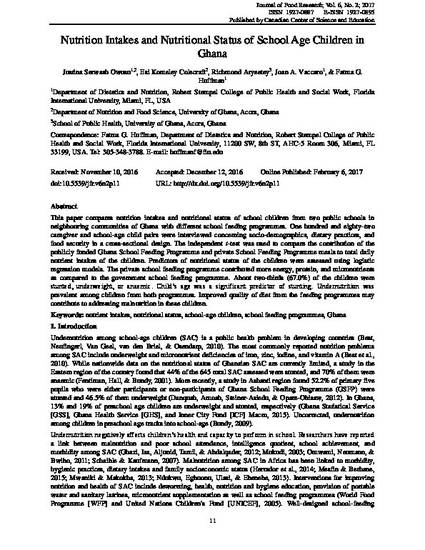
This paper compares nutrition intakes and nutritional status of school children from two public schools in neighbouring communities of Ghana with different school feeding programmes. One hundred and eighty-two caregiver and school-age child pairs were interviewed concerning socio-demographics, dietary practices, and food security in a cross-sectional design. The independent t-test was used to compare the contribution of the publicly funded Ghana School Feeding Programme and private School Feeding Programme meals to total daily nutrient intakes of the children. Predictors of nutritional status of the children were assessed using logistic regression models. The private school feeding programme contributed more energy, protein, and micronutrients as compared to the government school feeding programme. About two-thirds (67.0%) of the children were stunted, underweight, or anaemic. Child’s age was a significant predictor of stunting. Undernutrition was prevalent among children from both programmes. Improved quality of diet from the feeding programmes may contribute to addressing malnutrition in these children.
Available at: http://works.bepress.com/joan_vaccaro/49/
